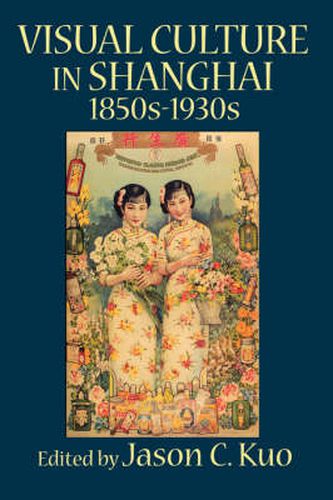VISUAL CULTURE IN SHANGHAI, 1850s-1930s
Jason C Kuo

VISUAL CULTURE IN SHANGHAI, 1850s-1930s
Jason C Kuo
This title is printed to order. This book may have been self-published. If so, we cannot guarantee the quality of the content. In the main most books will have gone through the editing process however some may not. We therefore suggest that you be aware of this before ordering this book. If in doubt check either the author or publisher’s details as we are unable to accept any returns unless they are faulty. Please contact us if you have any questions.
Visual Culture in Shanghai, 1850s-1930s is a study of formal and informal meanings of Haipai ( Shanghai School or Shanghai Style ), as seen through the paintings of the Shanghai school as well as other media of visual representation. The book provides us a point of entry into the nexus of relationships that structured the encounter between China and the West as experienced by the treaty-port Chinese in their everyday life. Exploring such relationships gives us a better sense of the ultimate significance of Shanghai’s rise as China’s dominant metropolitan center. This book will appeal not only to art historians, but also to students of history, gender studies, women’s studies, and culture studies who are interested in modern China as well as questions of art patronage, nationalism, colonialism, visual culture, and representation of women. This book constitutes a significant contribution to the literature about a period and a city that were pivotal to the emergence of modern China. -Richard K. Kent, Franklin & Marshall College. This book navigates the complexity of Chinese modernity. It bridges, conceptually and visually, the China of the past to present-day Shanghai, the symbol of the urban economy of 21st-century China. -Chao-Hui Jenny Liu, New York University. Shanghai was the rising and dynamic metropolis, where many aspects of modernity were embraced with enthusiasm. Pictorial art was no longer the domain of the elite, but professionalization, commercialization, popularization, and Westernization contributed to the dissemination of images to a larger and diverse audience. -Minna Torma, University of Helsinki.
This item is not currently in-stock. It can be ordered online and is expected to ship in 7-14 days
Our stock data is updated periodically, and availability may change throughout the day for in-demand items. Please call the relevant shop for the most current stock information. Prices are subject to change without notice.
Sign in or become a Readings Member to add this title to a wishlist.


